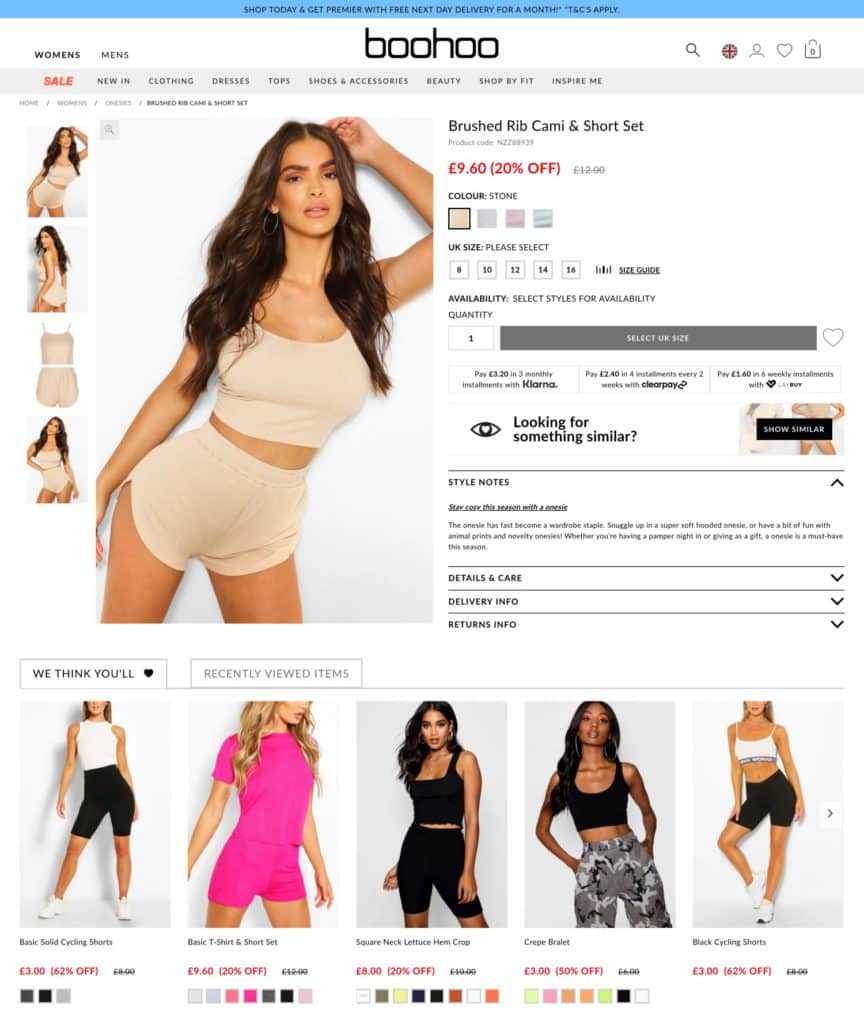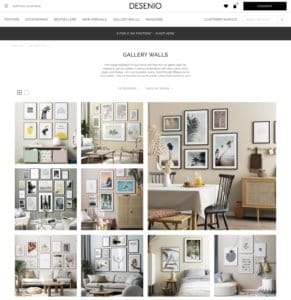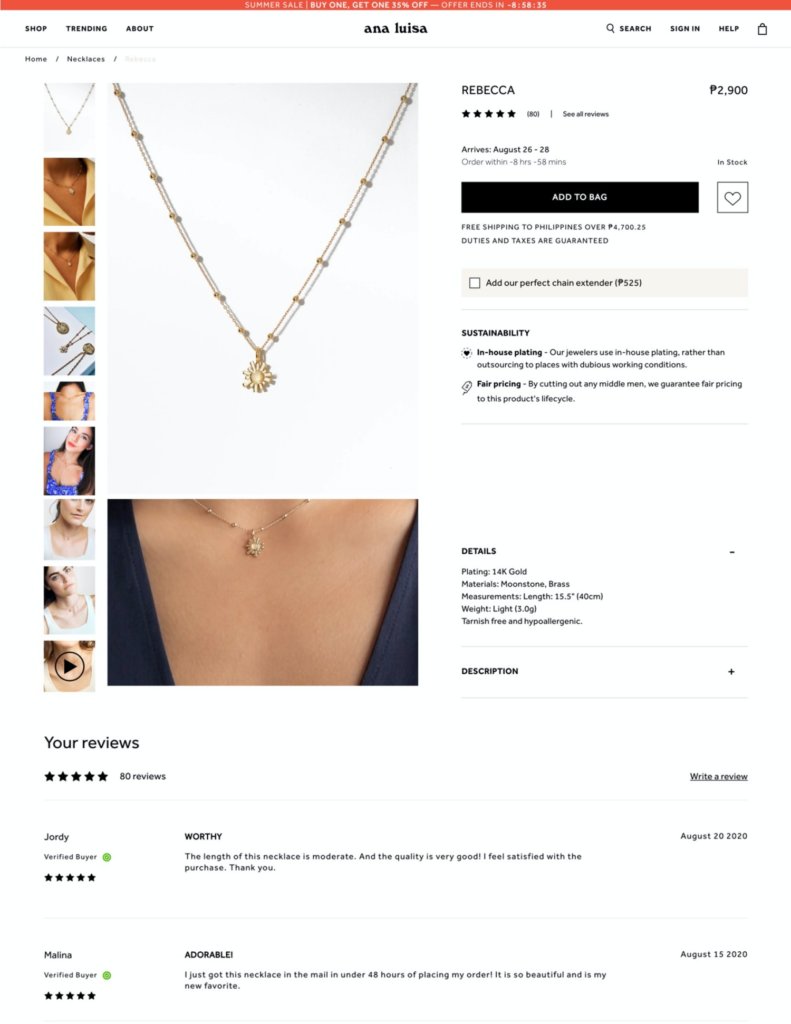For all the benefits that eCommerce provides, there’s one downside: The inherent distance it creates between brands and customers. In brick-and-mortar stores, shoppers can easily see a product, connect with it, and visualize how they might use it. Creating the same connection online can be a challenge. That’s where visual commerce comes in.

Brands and retailers need to recreate this same visual experience on their websites in order to stimulate connection, inspiration, and the desire to buy. And with the explosion of visual content online and the fierce eCommerce competition, nowadays, detailed product images are no longer enough to bridge this gap.
You have to take it a step further to stand out and truly connect with customers. In this post, fashion, home decor, and jewelry brands will discover how to deliver customer experiences that convert via visual commerce.
How to Win at Visual Commerce for Your Vertical
Digital shopping is all fun and games until customers have to imagine what it’s like to have your product in their lives. How will I look if I wear this peplum top with my favorite jeans? Does this couch go well with the rest of my furniture? Which piece of jewelry would best flatter my skin tone?
These are questions that have simple and immediate answers when customers are shopping in brick-and-mortar stores. Online, it takes a bit more effort for brands — but with the right visual commerce strategy, you can create an even better experience than in-store.
Visual commerce for fashion
When customers shop for shoes and clothing online, their journey doesn’t usually start on your site. According to McKinsey & Co. and the Business of Fashion, nine out of ten shoppers trust an influencer more than traditional advertisements or celebrity endorsements. This, alongside peer reviews (55%) and social media (74%) impact purchase decisions.
Your customers spend an average of 144 minutes per day on social media. They’re used to scrolling through thousands of visually appealing images, saving and screenshotting the ones they love, and even building their own style inspiration boards. The visual experience on your website needs to mirror their visual journeys on social media.
- Highlight user-generated content (UGC) in on-site inspiration galleries. By featuring customers with different styles and body types, you create an engaging visual experience that’s relatable for all shoppers.
- Keep shopper behavior top of mind: Think about the shoppers coming to your site with a screenshot from Instagram. How can you help them find their dream item in the most intuitive way possible? With visual search, you can instantly deliver the most accurate, visually similar results.
- It’s all about the angles: When customers click one of your products, make sure they can not only zoom but also see all angles—including the back. They should be able to visually experience your products the same way they would in-store.
- Consider adding videos to further aid your customers’ imagination and connection with the item they’re interested in. This will also help them see how the product looks in action.
- Finally, use visually appealing carousels to offer intelligent suggestions. Recommend products that complete the whole outfit on a product detail page, or show related products that are popular with other shoppers to facilitate social proof.
 Boohoo recommends not only similar products but also shoppers’ recently viewed items and recommendations based on their browsing behavior.
Boohoo recommends not only similar products but also shoppers’ recently viewed items and recommendations based on their browsing behavior.
Visual commerce for home decor
Due to COVID-19, global traffic to home decor and furnishing websites grew by 7% between January and March 2020, reaching 1.7 billion visits. As people continue to stay at and work from home, this trend is expected to continue.
Like fashion, home decor shopping is also a social, emotional, and personal activity. Visual social networks, especially YouTube, have no shortage of apartment hunting, tour, and makeover videos. Viewers regularly fill the comments section with questions asking where specific items are from.
In short, shoppers want to make sure that their space showcases their personality, and a huge part of what they want to express in their home is influenced by what they see online.
After inspiration strikes your shoppers, they may go on to sift through various websites to find the furniture that speaks to them. But that’s time-consuming, especially when they’re seeking out the fine details that make a house a home.
Visual commerce makes the process faster and more intuitive. In fact, according to Pinterest, “when shopping online for clothing or furniture, over 85% of respondents put more importance on visual information than text information.”
Unlike with fashion, shoppers don’t buy home decor items every day — especially when it comes to big purchases, like a bed or a couch. The more you can use visual cues to build trust for that big-ticket purchase online, the more comfortable shoppers will feel checking out.
- Start by simplifying website navigation. Home decor shoppers often don’t have the specific vocabulary to describe their inspiration. With icon-based navigation, customers can filter through your catalog with ease—relying on visual cues of patterns, styles, and furniture types, instead of words.
- Feature full room inspiration images on your homepage to help shoppers contextualize furniture and decorative items. Make sure that the images you feature are completely shoppable.
- Offer innovative on-site tools like camera search, augmented reality, and 3D product visualization features to enable shoppers to see in real-time how items will look in their home.
 Desenio inspires shoppers and offers decorating ideas.
Desenio inspires shoppers and offers decorating ideas.
Visual commerce for jewelry
A piece of jewelry can symbolize not only a person’s individuality but also relationships, memories, culture, and more.
With a market that’s expected to reach $480.5 billion by 2025, online jewelry shoppers look for features that are both beautiful and well-crafted. In-store, customers can touch the gemstones, hear explanations from associates, try on the jewelry to see how it looks on them, and confirm its authenticity.
Considering that jewelry is typically an expensive, infrequent purchase, how can brands establish trust and convey the same engaging and reassuring in-store experience online?
- Images on your website must stir confidence in your brand. Offer extreme zoom, 360-degree views of the jewelry, and product videos to inspire trust in the authenticity and value of your products.
- Highlight emotional visual content in inspiration galleries that show the story behind the products. For example, consider creating an engagement story gallery that showcases your ring collection while helping shoppers relate to your past customers.
- Jewelry comes with different stones in cuts and shapes that most shoppers are not familiar with. Asscher‐cut? Iolite? But they’ll know it when they see it. In addition to providing visual educational aids showcasing different gem cuts, consider providing visual search, so shoppers can find products using an image they saved for inspiration.
- Help customers continue browsing when they find the “almost-right” piece. Enable them to click on product page images to continue exploring similar items until they end up with a piece that matches exactly what they’re looking for.
 Ana Luisa presents products using inclusive photos, a video, user-generated visual content, customer reviews, and detailed descriptions.
Ana Luisa presents products using inclusive photos, a video, user-generated visual content, customer reviews, and detailed descriptions.
CX Is at the Heart of Visual Commerce
The goal of visual commerce is not only to engage customers but also to cut down on the friction between product discovery and purchase. Visual commerce allows shoppers to experience the product online as if they were checking it out in-store.
Ultimately, it’s important to remember that your customers are naturally visual creatures, and a winning online experience will make the most of that. Visual commerce done right can turn any fashion, home decor, or jewelry inspiration into a delightful path to purchase for your customers.